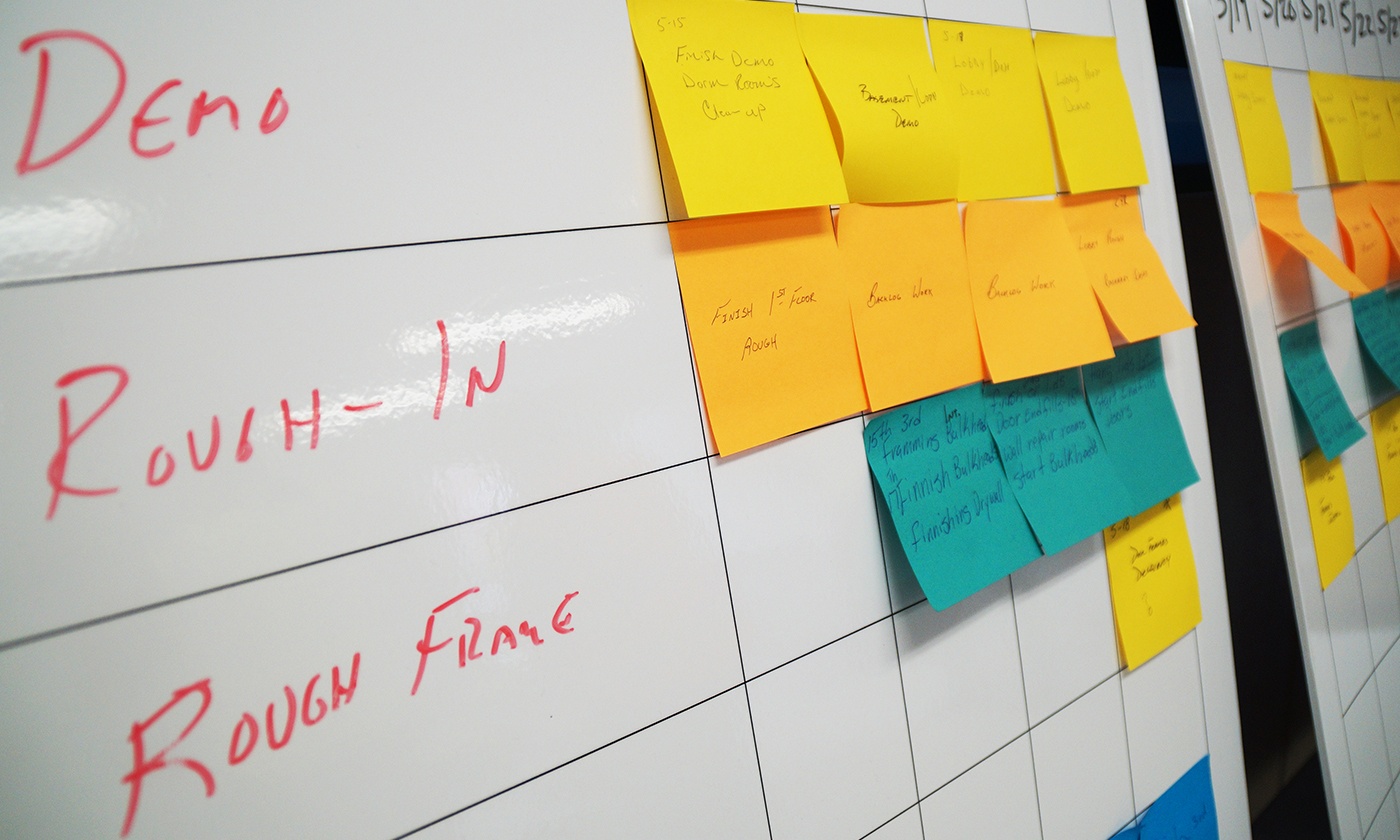Lean Construction technique helps reduce waste
In lean construction, one of the keys to success is centered on getting all of the experts who are supervising the work – called “last planners” – to work collaboratively in developing a plan that includes the best of alternatives available to them.
Pull planning is a method used as part of the Last Planner System to develop a coordinated approach for a particular phase of a project. When used correctly, it is one of the most effective ways teams can positively influence efficiency on a project. Like all aspects of Last Planner, it is an approach that emphasizes collaboration among those who are directly responsible for supervising work on a project.
In pull planning, every key stakeholder on a job works backwards from a target completion date, defining and sequencing tasks and working back towards the start date. Project partners start with the end goal in mind and work together to identify completion milestones.

“We have found the use of pull planning to be a very effective way to streamline project timelines,” says Granger Director of Field Operations Tom Owens. “When done correctly, it can have a pretty big influence on a project.”
When using pull planning, tasks, information and deliveries are planned based on the request – or “pull” – of downstream customers. Using a system that emphasizes pull scheduling will often highlight opportunities for efficiencies, such as smaller batches of work, just-in-time delivery and reduced lead times.
In a typical pull planning session, work is visualized using hand-written and color-coded sticky notes. In these collaborative meetings, each stakeholder identifies and plots their specific tasks on their unique-colored sticky notes along a timeline. As stakeholders identify and communicate tasks, all parties involved can easily visualize the order and dependencies of these tasks, as well as identify any possible overlap that could cause delays.
Pull planning sessions allow every stakeholder to see the big picture and work together and communicate with others prior to the onset of the phase or project. This often optimizes workflow, as potential problems are identified upfront and the waste of waiting, redundancy and over-processing are significantly reduced.
“One of the biggest benefits of pull planning and the Last Planner System is the increased collaboration and communication among all stakeholders,” said Owens. “It really gets everyone moving in the same direction, towards the same goals, and communicating about what they need from each other in order to get the job done.”
To see how the use of pull planning has had an immediate impact on one Granger project at Alma College, watch the video below.
Granger Construction: Alma College Pull Planning from Granger Construction on Vimeo.



